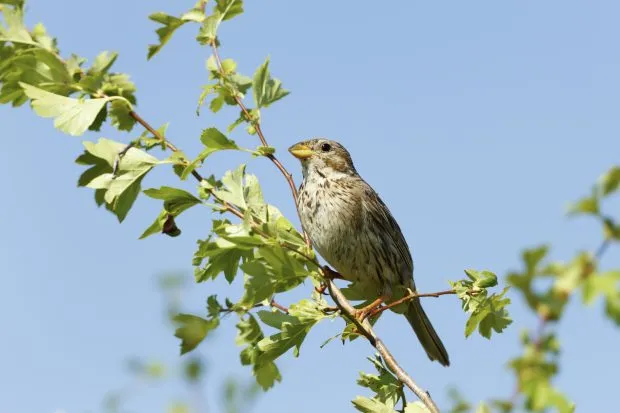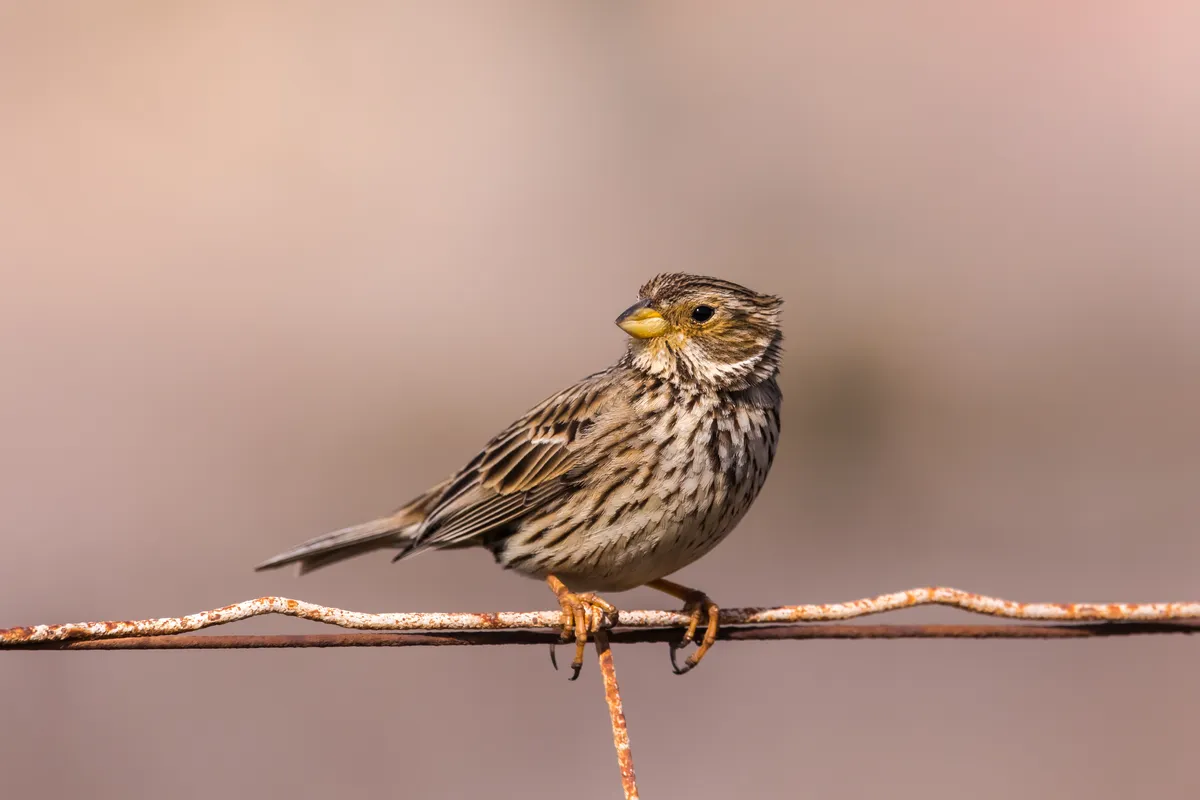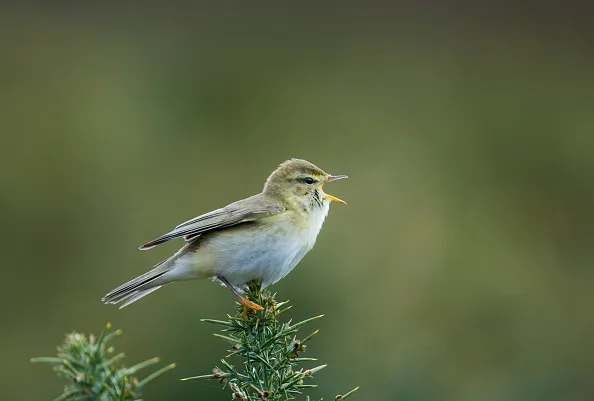Honestly, the things that small brown birds get up to. A scientific study once found a male corn bunting (Emberiza calandra) in a Sussex field that in a single season mated with 18 different females.
Looking at the dull corn bunting, one of Britain’s most featureless birds – one that makes a house sparrow look like a supermodel – one would not expect such shenanigans.
In this guide we take a closer look at the unassuming yet surprising world of the corn bunting, revealing what it looks like, its song, diet and courtship.
Interested in learning more about Britain’s songbirds? Check out our guides to tits, warblers and blackbirds.
Buntings guide
Buntings are a group of seed-eating birds that bear many of the same characteristics as finches. Learn all about these special songbirds, including six species to look out for in Britain, with your expert guide to buntings.

Corn bunting identification
The corn bunting presents a tricky identification problem, because there isn’t much to hold on to – it’s brown and streaky and lacking any definitive features to pin upon it.
It is noticeably, though, a small rotund bird, a feature exaggerated by the short tail. The bill is broad and yellowish, while the streaks on the breast often coalesce to make a spot.
The tail doesn’t have white edges, as seen on the yellowhammer, which is often found in similar places.
It has a powerful, rather graceful flight, but you need to know the bird very well to tell from this feature.

Corn bunting call
Perched up high on power lines or post, the corn bunting delivers an atmospheric song that sounds like the jangling of a bunch of keys.
Corn bunting habitat and distribution
The corn bunting is a classic species of arable farmland and grassland, occurring patchily throughout Britain from Cornwall to Scotland.
Once much more common, it has suffered from the decline of winter stubbles, meaning less winter food, and the introduction of mid-season mowing for silage, which can destroy the ground nests.
Where it is common, though, it is often seen on powerlines or posts.

Corn bunting courtship
The corn bunting has a courtship display in which it flies from one perch to another dangling its legs. Apparently this enough the get the female interested.
Corn bunting diet
In common with other buntings, corn buntings feed their young mostly on insects, and a bewildering variety have been recorded, including sawflies.
The parents also eat insects in summer, but in winter everybody becomes highly dependent on seeds.
Britain's most melodic songbirds
In Britain we are blessed with an incredible variety of beautiful birdsong from late winter into early summer. From the nightingale to the blackbird, here is your guide to the best British songbirds, including how to identify each species

Corn bunting populations
The corn bunting is uncommon all year round, with 11,000 pairs in the UK. The species is in decline (Red List of Conservation Concern).
